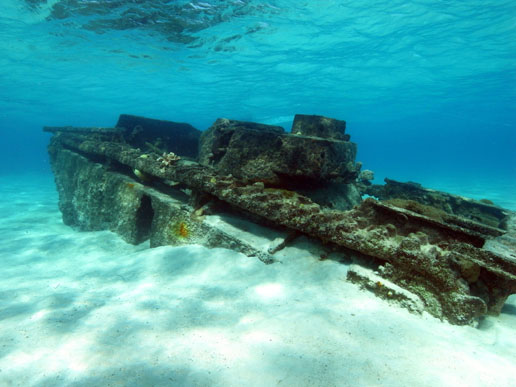Results and Site Interpretations
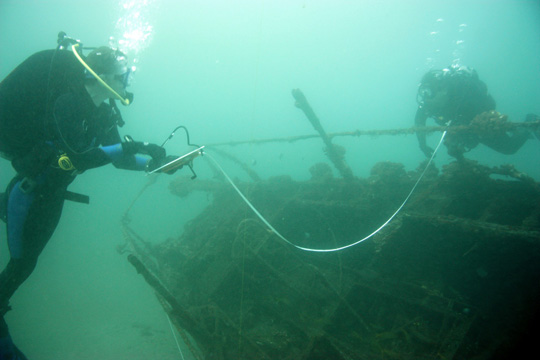
Interpreting the Past: Shipwrecks as History
The 2011 survey team produced scaled drawings and photographs of six wreck sites. General site descriptions and preliminary site interpretations follow in the order that the dive team documented each location:
- Sailing vessel
- Curtiss SB2C Helldiver
- Grumman F6F Hellcat
- LVT-4
- LVT(A)-4
- LVT(A)-4
Unidentified Sailing Vessel:
A 38-foot single-mast sailing vessel (sloop) lies canted over on her starboard side in Mā`alaea Bay near Kīhei. Numerous rigging elements, VHF radio, and forestay wrapped with the jib (roller-reefing system) lie outboard on the sediment. An anchor line remains attached to the bow, and emerges again from the sand approximately 60 feet to the north, attached to a small admiralty-style anchor. Lines are also wrapped around the hull at bow and stern. The vessel's wheel and second anchor are located within the stern. The cabin superstructure, engine, batteries, mast, boom, and other major components are missing. Piles of discarded wine and Bailey's whiskey bottles are distributed nearby in the sand.
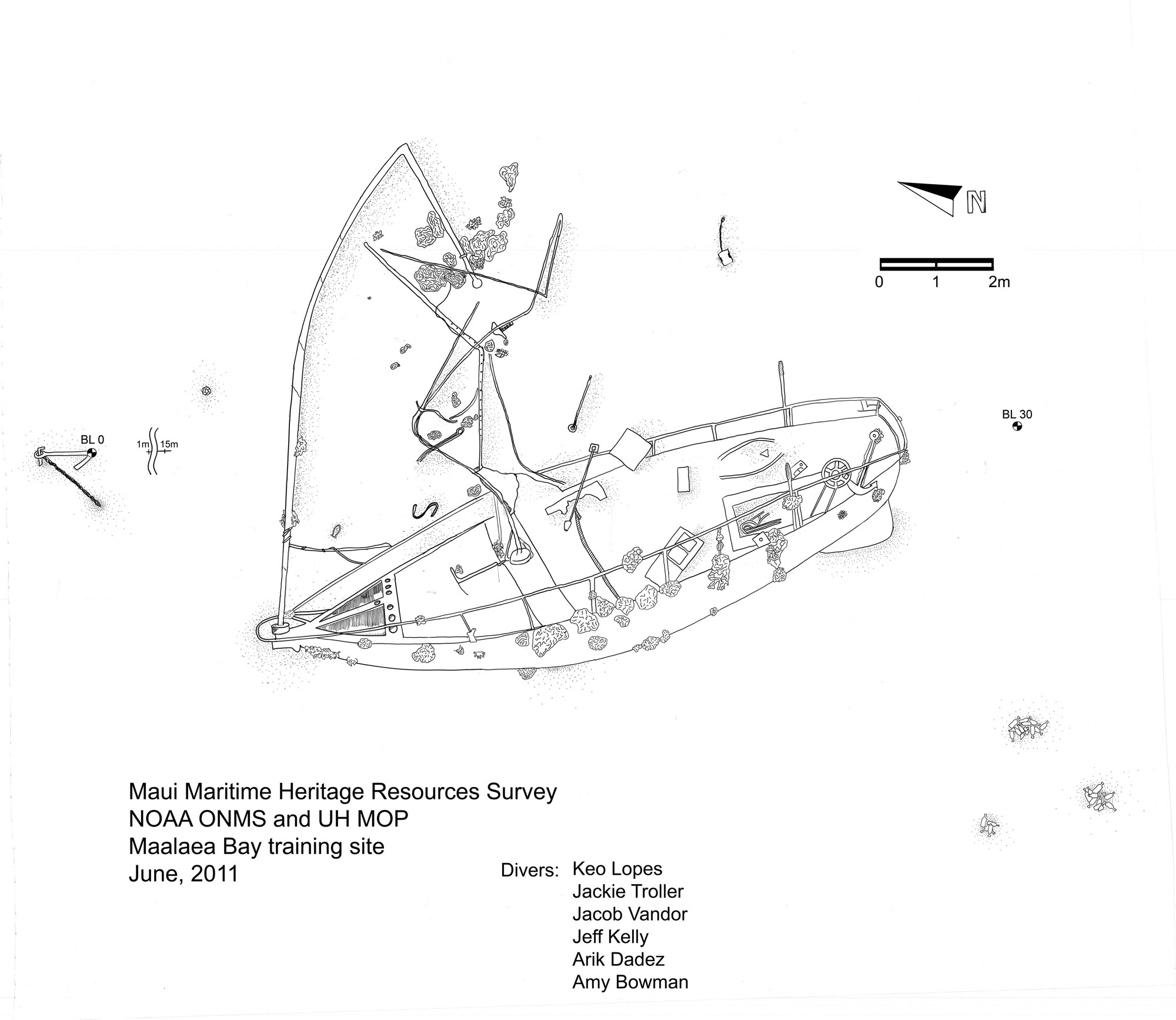
This wreck was chosen as a training opportunity for baseline trilateration, the basic hands-on recording method for accurately mapping wreck sites underwater. The shallow location provided more dive time for training. This sail boat seems to have sunk at her mooring. It appears that much of her equipment was later salvaged, and an unsuccessful attempt made (lifting lines still at bow and stern) to raise the vessel. No trace of vessel name or registration could be found.
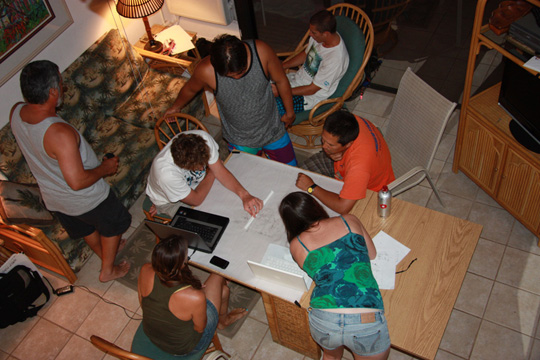
Curtiss SB2C-1C Helldiver:
An historic two-seat naval aircraft sits upright in the sand of Mā`alaea Bay near Kīhei, landing gear retracted. A healthy abundance of coral covers the upper fuselage. Both pilot and gunner's canopies are open, and the rescue raft is missing. The radial engine with three-blade propeller is breaking away from the air frame, and the upper engine cowling lies adjacent to the forward fuselage. Both 20mm cannon are in the wings. The tail's vertical stabilizer has broken off and lies in the sand near the tail. The feint trace of the Bureau of Aviation number is visible: 18400.
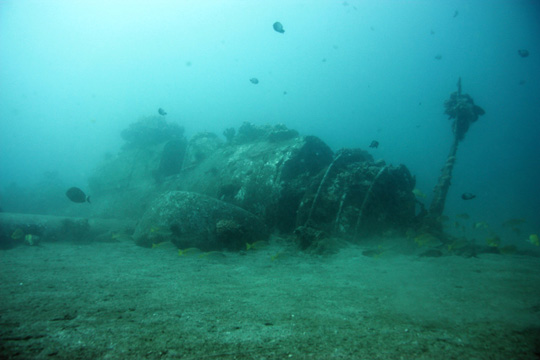
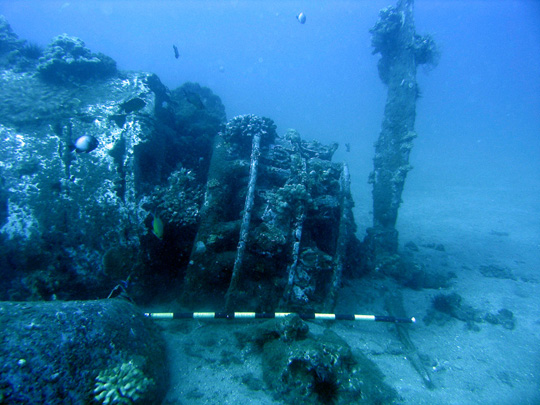
This site was discovered in January 2010 by local dive shop owner Brad Varney (B&B Scuba, Kīhei), who contacted the Naval History & Heritage Command and subsequently NOAA's Office of Marine Sanctuaries. An initial site sketch and documentation was completed by NOAA in February 2010. The 2011 dive team returned to this site and produced a more detailed two-dimensional site plan. The overall shape, tail design, canopy design, and armament identify the aircraft as an SB2C Helldiver, a World War II dive bomber built by the Curtiss Wright Corporation. The existence of the tail number (rare) allows exact identification (SB2C-1C) and reveals details of the crash from records at the Naval Aviation Branch, Naval History & Heritage Command:
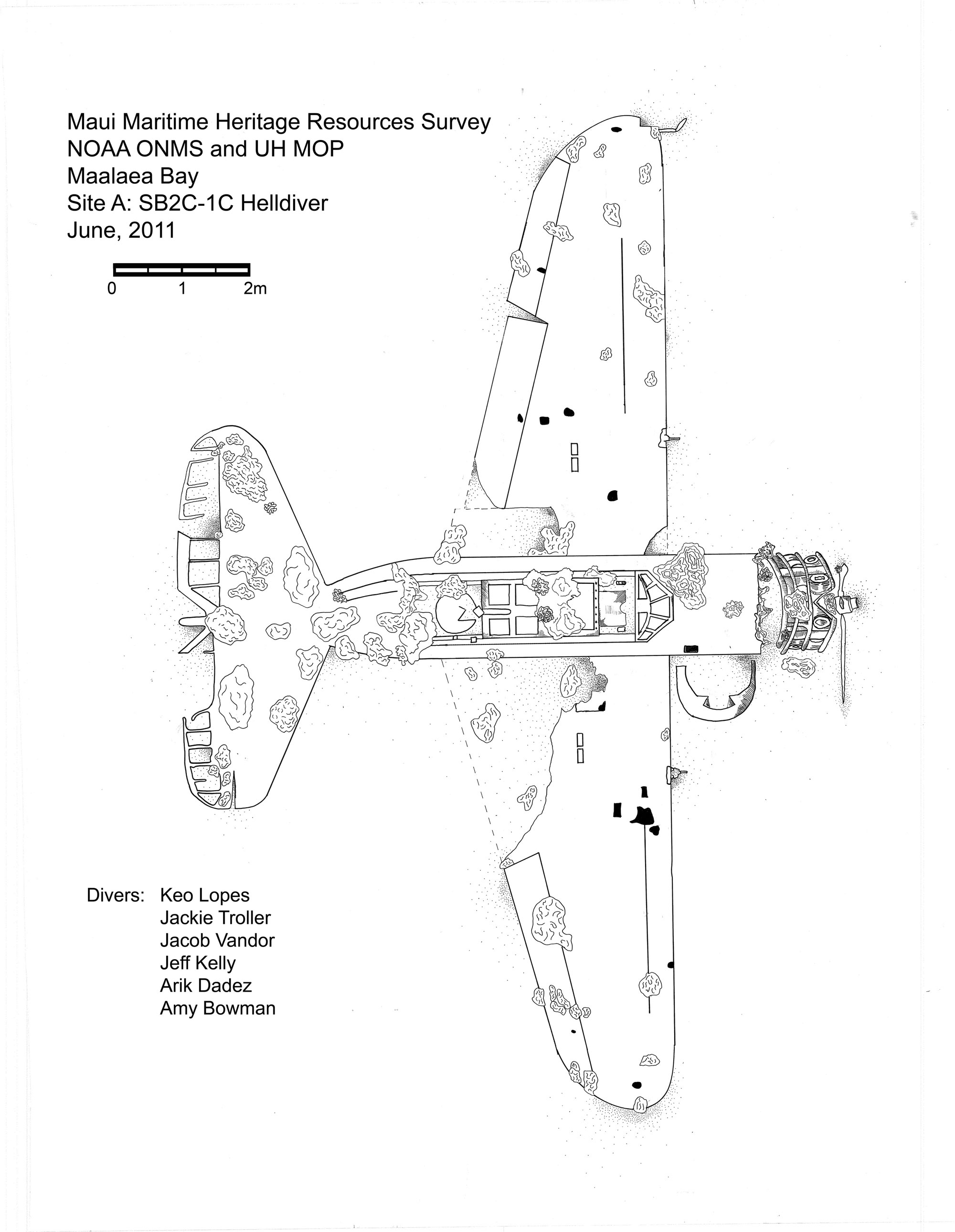
On August 31 1944, pilot William E. Dill and radioman Kenneth W. Jobe, members of patrol bomber squadron VB-4, were conducting dive bombing practice. During evasive maneuvers following their second steep dive on the target, the entire vertical tail assembly twisted to port, jamming the rudder controls. No longer able to safely control the aircraft, and unable to make the runway at Pu`unēnē, the pilot made a forced water landing approximately 1-2 miles south of the Naval Air Station. Both pilot and radioman were rescued. The plane was not recovered.
Dive bombing had its origins in the very early days of naval aviation. Aircraft would attempt a near-vertical dive, releasing their bombs, and then pull out under extreme G-force stresses. This allowed smaller carrier-based planes to deliver their ordnance more effectively to the minimally-armored decks of enemy ships. After World War II, improvements in aircraft rockets and anti-aircraft weapons made the technique of dive bombing obsolete. The need for specialized aircraft vanished; the Curtiss SB2C Helldiver was the last of its kind.
This aircraft is protected by the 2004 Sunken Military Craft Act (10 U.S.C. 113 Note and 118 Stat. 2094-2098): "No person shall engage in or attempt to engage in any activity directed at a sunken military craft that disturbs, removes, or injures any sunken military craft..."
Grumman F6F Hellcat:
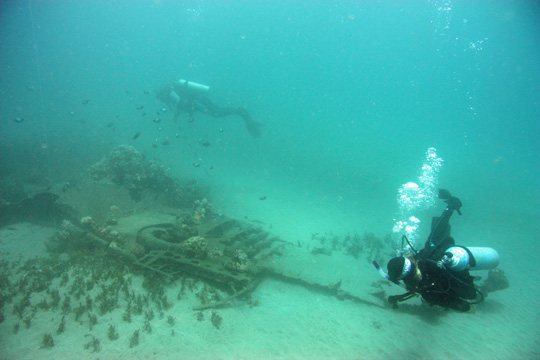
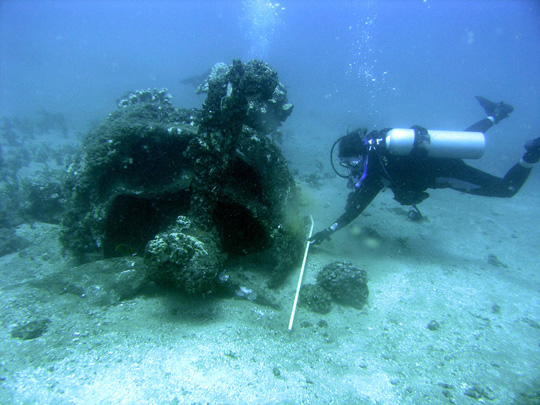
Portions of a naval aircraft lie in shallow water near Lā`ie. A radial engine and three-blade propeller sit upright in the sand. The mid-section of a fuselage, and port and starboard wings, lie upside down approximately 75 feet away, partially buried in the sediment. The landing gear is retracted. There is no sign of the tail section in the vicinity of the site.
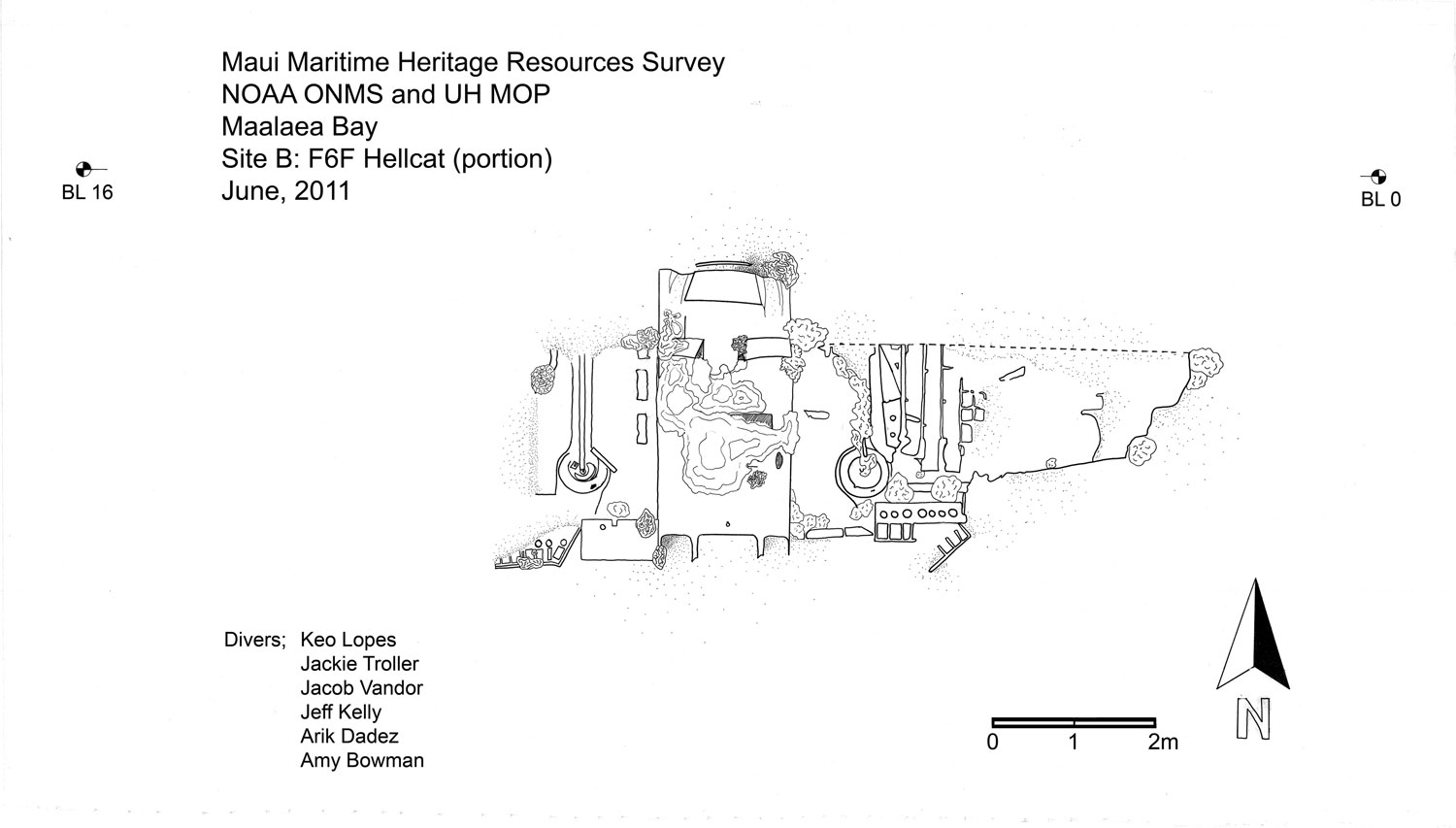
The 2011 dive team produced a detailed two-dimensional site drawing of the fuselage and wing portion, and photographed and measured the radial engine. Comparison of the landing gear design, as well as the engine and lower engine exhaust flaps, suggests that the aircraft is an F6F-3 Hellcat fighter, produced by the Grumman Aircraft Engineering Corporation. The Hellcat was one of the most successful single-seat fighter aircraft during World War II. Carrier-based Hellcats were responsible for almost 75% of all the U.S. Navy's air-to-air victories during the war in the Pacific. Over 5,000 were eventually built.
The current aviation database records almost 300 F6F Hellcats lost throughout the Hawaiian archipelago. Some 39 possible F6F-3 Hellcats alone may have been lost in the Maui south coast area. These losses occurred between July 1943 and July 1945.
This aircraft is protected by the 2004 Sunken Military Craft Act (10 U.S.C. 113 Note and 118 Stat. 2094-2098): "No person shall engage in or attempt to engage in any activity directed at a sunken military craft that disturbs, removes, or injures any sunken military craft..."
LVT-4 AMTRAK:
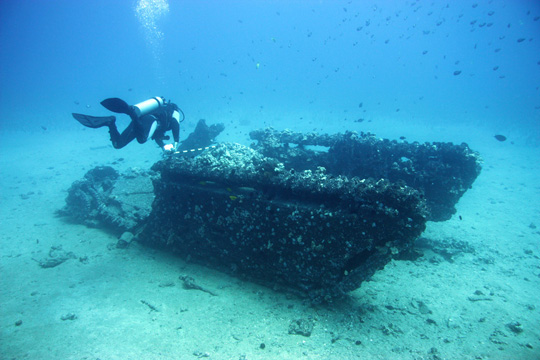
An extremely deteriorated tracked vehicle sits upright in the sand of Mākena Bay. The forward driver's compartment has collapsed, exposing the front-mounted engine, and all features are heavily encrusted with corrosion and marine growth. Both front drive sprockets have fallen forward, breaking the tracks apart from the upright sides of the vehicle. There is no sign of any rear ramp door or floor (bottom) within the cargo area.
The 2011 dive team took overall measurements and photos of this site as dive time was limited due to depth. Ramped landing craft delivered soldiers directly onto the shore at the water's edge, but once outside of the landing craft, exposed troops still had to cross the open beach under enemy fire. Tracked amphibious assault vehicles, capable of transporting troops and equipment from ship to shore, and then driving up onto and beyond the beach itself, were developed to support amphibious operations and reduce casualties during landings. LVTs, or "Landing Vehicle Tracked" (also called AMTRAKS) underwent a number of substantive design changes throughout the 1930s and 1940s.
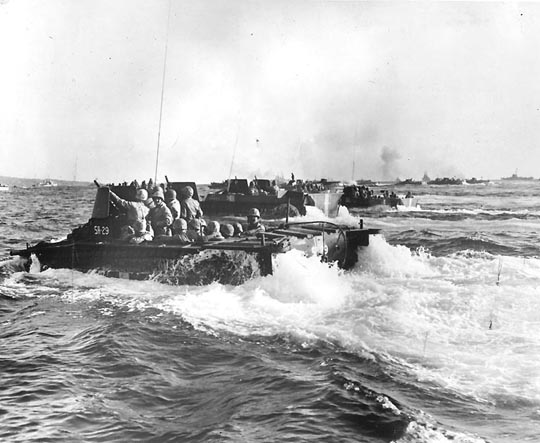
The salient features of this deteriorated wreck site include the overall dimensions, a forward-mounted engine and driver's compartment, a rear cargo space, a (presumed) rear ramp, and the "W" shaped grousers or cleats on the tracks for propelling the vehicle in the water. Both the LVT-1 and LVT-2 had rear-mounted engines, while the LVT-3 had side-mounted engines. The LVT-4 therefore most closely conforms to the features on this site. The cargo and equipment carrier could disembark troops through the rear door, rather than over the sides of the vehicle. More than 8,000 LVT-4s were produced during the war. LVT- 4s were first used in combat during the invasion of Saipan, June 1944. The Saipan invasion, or Operation Forager, employed more than 700 LVTs.
This site is protected by the 2004 Sunken Military Craft Act (10 U.S.C. 113 Note and 118 Stat. 2094-2098): "No person shall engage in or attempt to engage in any activity directed at a sunken military craft that disturbs, removes, or injures any sunken military craft..."
LVT(A)-4 AMTANK:
An extremely deteriorated tracked vehicle sits upright in the sand of Mākena Bay, surrounded by a small debris field of encrusted pieces, including batteries and front drive sprocket. The rear-mounted engine is heavily encrusted with coral. The sides of the hull and tracks are almost completely broken down and missing. Only a portion of the rear starboard hull remains upright. The most recognizable feature is the open turret with its short 75mm howitzer barrel.
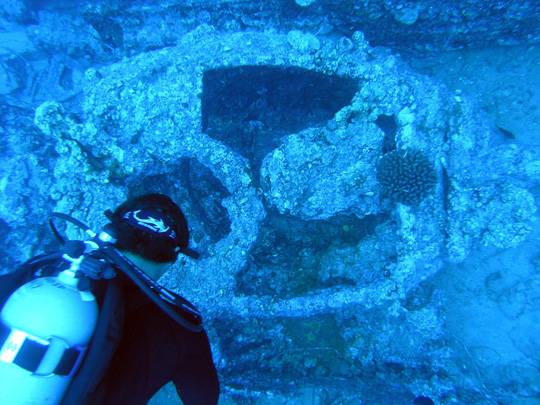
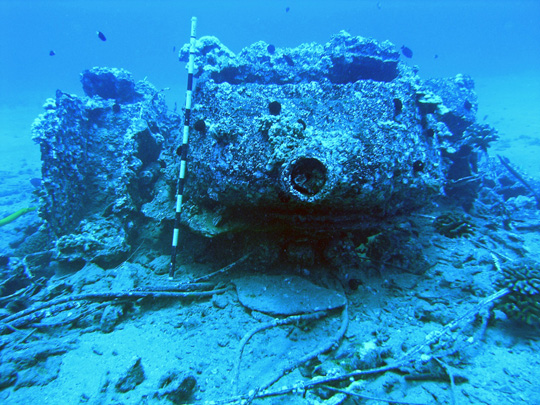
The 2011 dive team took overall measurements and photos of this site as dive time was limited due to depth. This is essentially a turret and engine sitting amongst debris scatter, a site affected by more than just natural deterioration over time. Local divers mentioned that one of the sunken "tanks" from World War II had unexploded ordnance and was "blown in place" to mitigate the hazard. The appearance of this site may reflect that event. The open turret and short howitzer barrel are the most recognizable features. Fortunately, these two items are enough to identify this site as an armored amphibious assault vehicle, or LVT(A). The howitzer denotes an LVT(A)-4, rather than an LVT(A)-1 which had a 37mm anti-tank gun. The LVT(A)-4 was first used in combat during the invasion of Saipan, June 1944.
During amphibious invasions, bombardment of enemy positions ceased when friendly landing troops reached the shore. This exposed soldiers on the beach to devastating fire from entrenched positions. LVT-(A)s, also called AMTANKS, were sent in first to cover the landing of personnel, protecting the troops by providing suppressive fire on the beach itself. Personnel and cargo LVT carriers then followed. Armored amphibious assault vehicles like AMTANKS should not be confused with tanks, which were often landed later, crawling directly onto the beach from larger amphibious ships.
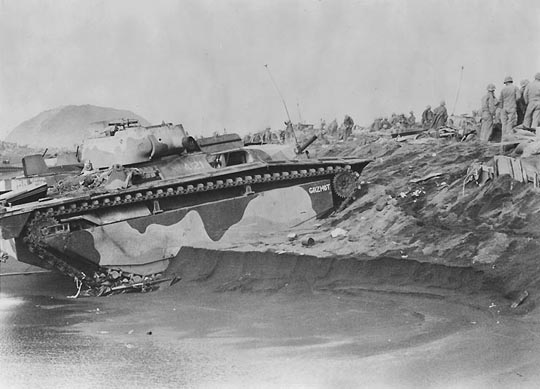
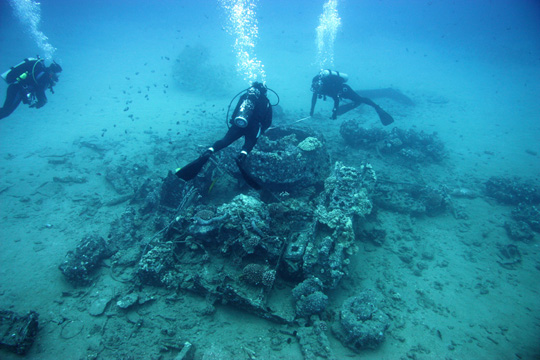
This site is protected by the 2004 Sunken Military Craft Act (10 U.S.C. 113 Note and 118 Stat. 2094-2098): "No person shall engage in or attempt to engage in any activity directed at a sunken military craft that disturbs, removes, or injures any sunken military craft..."
Second LVT(A)-4 AMTANK:
A second deteriorated tracked vehicle sits upright in the sand of Mākena Bay, surrounded by a much smaller debris field than the LVT(A)-4 above. The rear-mounted engine is encrusted with coral but more complete. The port side hull and track are almost complete, and the forward drive sprocket is in place, though fallen to the sea floor. The raised deck over the driver's compartment is missing. The most prominent features are the open turret with howitzer, forward sprocket, port side hull and track, and rear-mounted engine with two rubber-lined self-sealing fuel tanks.
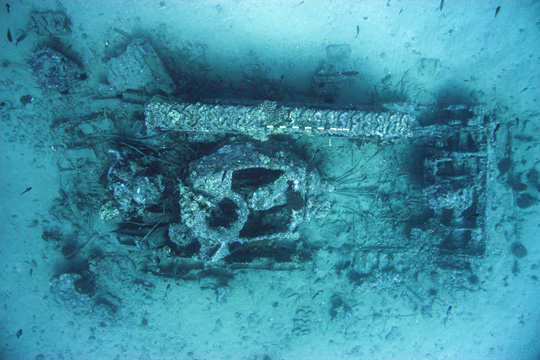
The 2011 dive team took overall measurements and photos of this site as dive time was limited due to depth. The overall size and turret with howitzer identify this site as a second LVT(A)-4. The condition of this site is more likely due to natural deterioration over time.
This site is protected by the 2004 Sunken Military Craft Act (10 U.S.C. 113 Note and 118 Stat. 2094-2098): "No person shall engage in or attempt to engage in any activity directed at a sunken military craft that disturbs, removes, or injures any sunken military craft..."
